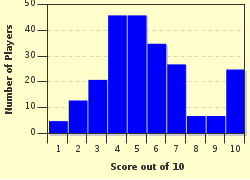Quiz Answer Key and Fun Facts
1. The rejuvenating properties of green tea were first discovered in which country?
2. To which of these common ornamental plant groups is tea most closely related?
3. The fermentation process is an essential part of the production of green tea.
4. What is the average productive life of a green tea plant?
5. The majority of Japanese green tea plantations are produced by clonal propagation (cuttings).
6. Green tea is usually harvested three to four times per season. In Japan, which harvest produces the highest quality product and is the most economically valuable to the grower?
7. Green tea plantations in Japan today are pruned and harvested mechanically.
8. To achieve the best quality 'Sencha' (high grade) tea freshly harvested leaf is delivered to the processing factory one to two hours after harvest. Once there it is processed using which of these three basic procedures?
9. The popularity of green tea in the west is growing as people discover the refreshing taste and health benefits that have been long known in the East. Which of the following is NOT a recognised health benefit of green tea?
10. To prepare an ideal cup of Japanese style green tea (Sencha) you should place a measured amount of tea in a pot, add boiled water, allow to draw for five minutes, then serve, adding milk and sugar to taste.
Source: Author
mstanaway
This quiz was reviewed by FunTrivia editor
Exit10 before going online.
Any errors found in FunTrivia content are routinely corrected through our feedback system.

